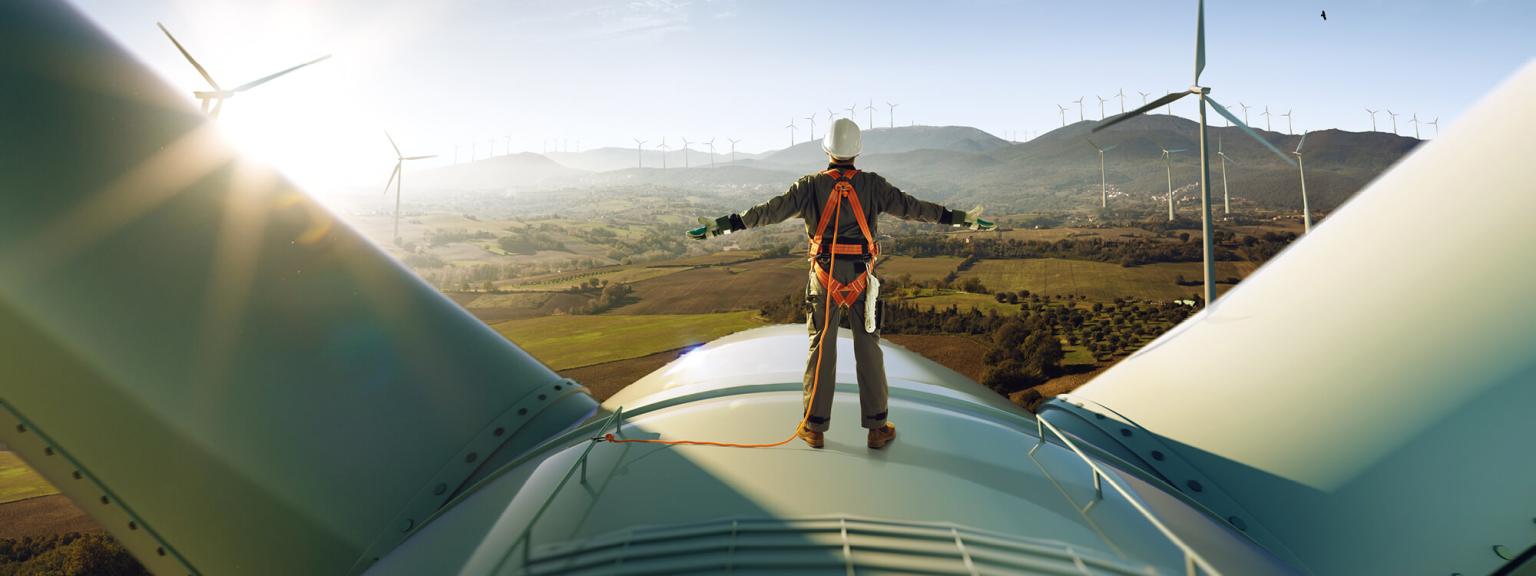
Thrill seekers wanted as blade technicians
The UK has approximately 7,250 operational wind turbines on and offshore, with a capacity of over 14.6 gigawatts, enough to power 15 large coal or gas plants. Their 21,000+ blades require regular inspections, and with wind turbine installations within Europe set to increase by 64% by 2020, there’s an ever-increasing demand for Blade Technicians across the continent.
What is a Blade Technician?
Blade Technicians are specially-trained engineers responsible for maintaining, repairing and inspecting the blades on a wind turbine. This work can be carried out onshore, offshore or in blade factories when the weather becomes an issue. The work of a blade technician requires knowledge, expertise and special equipment, but perhaps surprisingly, the only prerequisite for the job is for you to have the full Global Wind Organisation (GWO) Basic Safety Training certificates.
To prove how in demand these specialists are, MHI Vestas, a market-leading company in the world of wind power, has recently hired over 100 blade technicians for their North Wind Offshore Wind Farm in Belgium, to perform niche repairs and inspections on its 72 offshore wind turbines.
What does it take to be a Blade Technician?
Carrying out blade repairsrations can be dangerous and could be considered one of the riskiest jobs in the wind sector. But it is also exciting. As a blade technician, your job involves climbing up and out of the hub, before using rope access techniques to drop down to the necessary point(s) on the blade. As such, technicians must complete full training, giving them the knowledge and skills to undertake inspections, maintenance and repairs. There are several training centres and providers across the UK that offer the required 2-3 day courses , including Maersk Training, which has delivery centres in Newcastle, England and Aberdeen, Scotland.
What salary and benefits can I expect?
The majority of blade technician jobs are on a contract basis and work on rotation. For onshore work, you can expect to work a pattern of five weeks on, one week off. For offshore work, it is more likely to be two weeks on, two weeks off.
Pay rates also vary. For onshore work, you can expect to receive between £15 and - £19 per hour whereas for offshore work, you are likely to receive slightly more at £20 - £25 per hour with travel, accommodation and food included.
Other benefits can include a company van and work phone; however this depends on the package each employer is willing to offer.
Where are the jobs?
In 2016, almost 90% of new power in Europe was from renewable sources with wind energy overtaking coal as the EU’s second largest form of power generation. With Europe leading the way in wind power, blade technicians are needed across a number of European countries including the UK, France, Germany, Romania, Spain and Sweden.
If this sounds like a career for you, or you’d like to find out more, we can guide you on how to land your first role in the industry and offer you advice on training centres.
STEM insights
Sector insights
- Engineering insights
- Aerospace insights
- Automotive insights
- Maritime insights
- Infrastructure insights
- Highways insights
- Rail insights
- Building Services insights
- Water & Environment insights
- Energy insights
- Renewables insights
- Oil & Gas insights
- Power & Nuclear insights
- Engineering Technology insights
- Telecoms insights
- Technology insights
- AI & Robotics insights
- Cloud insights
- Cyber Security insights
- ERP insights
- Development insights
- Project Management insights